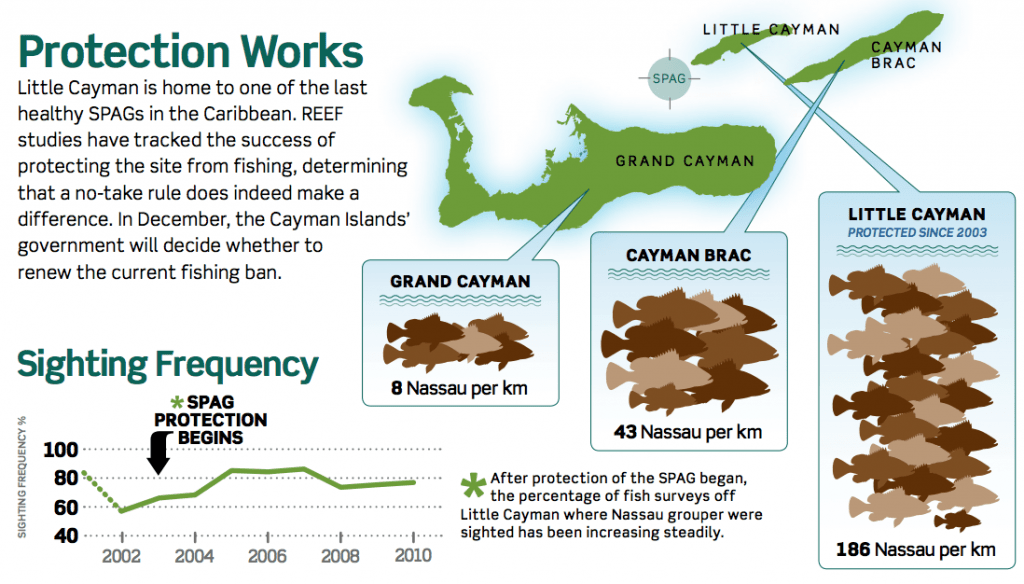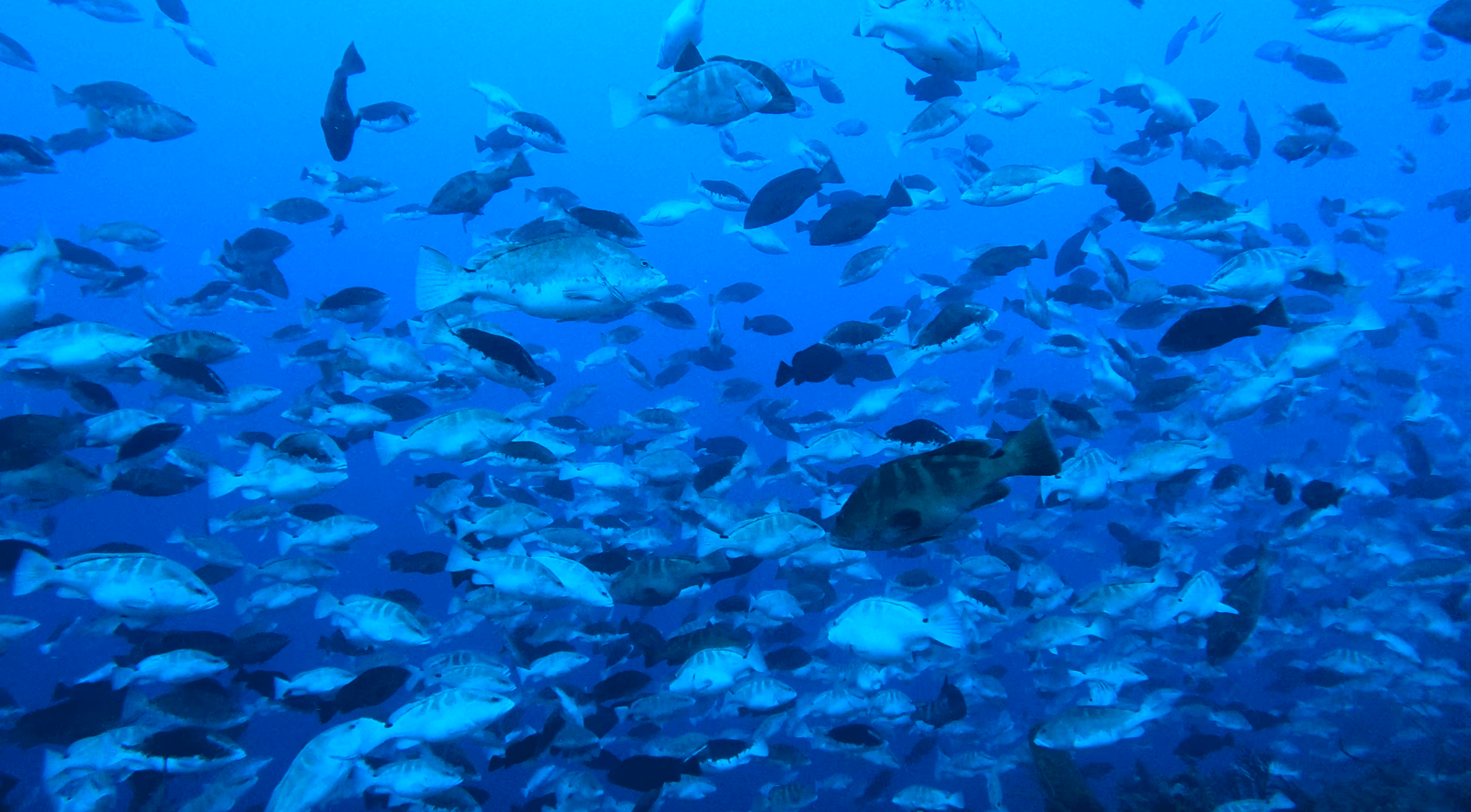The Cayman Islands is home to the last known intact spawning aggregations of Nassau grouper in the world. The reason why is a conservation success story!
Historically, thousands of Nassau grouper gathered in aggregations around the Caribbean to spawn during the January and February full moons. According to REEF, nearly 50 of these aggregation sites have been documented around the region, but due to overfishing, the majority of them are no longer viable. The last remaining site is on the west end of Little Cayman. So far, results have shown that banning fishing at these sites has a direct and positive effect on the Nassau grouper population. That’s why many scientists advise its continued protection.
Because of the Cayman Islands’ conservation management, this particular spawning aggregation has been protected since 2003. Additionally since 2003, Reef Environmental Education Foundation (REEF) has partnered with the Cayman Islands Department of Environment to better understand and protect the spawning aggregation of Nassau grouper through the Grouper Moon Project. Through studying the Nassau grouper population size, fish lengths, juvenile habitats, genetics, and ocean currents, researchers continue to learn more about the Nassau grouper.
Protecting the Nassau grouper by imposing a fishing ban on the spawning aggregation ensures a healthy fish stock to keep fishermen in business for years to come, and supports a healthy ecosystem on the reef.
For more information on the project, visit https://www.reef.org/programs/grouper-moon-project


